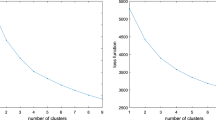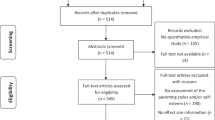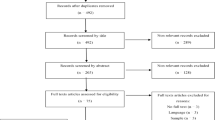Abstract
Objectives
Although studies support a direct association between parent and child emotion regulation, little work has considered potential mechanisms, such as family context. For example, parents who have difficulty regulating their emotions may be more likely to adopt an authoritarian parenting style, especially under high family chronic stress, and this parenting style may then influence children’s development of emotion regulation. The current study examined authoritarian parenting style as a potential mechanism of the intergenerational transmission of emotion regulation. We also examined how maternal emotion regulation and family chronic stress interact to influence parenting behaviors.
Methods
A total of 218 mother-adolescent dyads (M age = 15.5 years, 55% female) were recruited from the community and assessed using a mix of self-report measures of emotion dysregulation and parenting style, and interview-based measures of family chronic stress.
Results
Results showed maternal emotion dysregulation predicted authoritarian parenting style that, in turn, predicted adolescent emotion dysregulation, with a significant indirect effect. Family chronic stress strengthened the association between maternal emotion dysregulation and authoritarian parenting style, such that the indirect effect of maternal emotion regulation on adolescent emotion regulation via authoritarian parenting style was stronger at high levels of chronic stress.
Conclusions
Results suggest that authoritarian parenting style and family chronic stress serve as important factors in the intergenerational transmission of emotion regulation.



Similar content being viewed by others
References
Aldao, A., Nolen-Hoeksema, S., & Schweizer, S. (2010). Emotion-regulation strategies across psychopathology: a meta-analytic review. Clinical Psychology Review, 30, 217–237.
Baumrind, D. (1968). Authoritarian v. authoritative parental control. Adolescence, 3, 255–272.
Bigelow, A. E., MacLean, K., Proctor, J., Myatt, T., Gillis, R., & Power, M. (2010). Maternal sensitivity throughout infancy: continuity and relation to attachment security. Infant Behavior and Development, 33, 50–60.
Bornstein, M. H., & Suess, P. E. (2000). Child and mother cardiac vagal tone: continuity, stability, and concordance across the first 5 years. Developmental Psychology, 36, 54–65.
Bridgett, D. J., Burt, N. M., Edwards, E. S., & Deater-Deckard, K. (2015). Intergenerational transmission of self-regulation: a multidisciplinary review and integrative conceptual framework. Psychological Bulletin, 141, 602–654.
Bridgett, D. J., Gartstein, M. A., Putnam, S. P., Lance, K. O., Iddins, E., Waits, R., & Lee, L. (2011). Emerging effortful control in toddlerhood: the role of infant orienting/regulation, maternal effortful control, and maternal time spent in caregiving activities. Infant Behavior & Development, 34, 189–199.
Bridgett, D. J., Laake, L. M., Gartstein, M. A., & Dorn, D. (2013). Development of infant positive emotionality: the contribution of maternal characteristics and effects on subsequent parenting. Infant and Child Development, 22, 362–382.
Brody, G. H., & Ge, X. (2001). Linking parenting processes and self-regulation to psychological functioning and alcohol use during early adolescence. Journal of Family Psychology, 15(1), 82–94.
Buckholdt, K. E., Parra, G. R., & Jobe-Shields, L. (2014). Intergenerational transmission of emotion dysregulation through parental invalidation of emotions: Implications for adolescent internalizing and externalizing behaviors. Journal of Child and Family Studies, 23, 324–332.
Calkins, S. D., Smith, C. L., & Gill, K. L. (1998). Maternal interactive style across contexts: relations to emotional, behavioral, and physiological regulation during toddlerhood. Social Development, 7, 350–369.
Contreras, J. M., Kerns, K. A., Weimer, B. L., Gentzler, A. L., & Tomich, P. L. (2000). Emotion regulation as a mediator of associations between mother-child attachment and peer relationships in middle childhood. Journal of Family Psychology, 14, 111–124.
Daley, S. E., Hammen, C., & Rao, U. (2000). Predictors of first onset and recurrence of major depression in young women during the 5 years following high school graduation. Journal of Abnormal Psychology, 109, 525–533.
Darling, N., & Steinberg, L. (1993). Parenting style as context: an integrative model. Psychological Bulletin, 113, 487–496.
Deater-Deckard, K., Li, M., & Bell, M. A. (2016). Multi-faceted emotion regulation, stress, and affect in mothers of young children. Cognition & Emotion, 30, 444–457.
Deater-Deckard, K., Wang, Z., Chen, N., & Bell, M. A. (2012). Maternal executive function, harsh parenting, and child conduct problems. Journal of Child Psychology and Psychiatry, 53, 1084–1091.
DeWall, C. N., Baumeister, R. F., Stillman, T. F., & Gailliot, M. T. (2007). Violence restrained: effects of self-regulation and its depletion on aggression. Journal of Experimental Social Psychology, 43(1), 62–76.
Dishion, T. J., Patterson, G. R., Stoolmiller, M., & Skinner, M. L. (1991). Family, school, and behavioral antecedents to early adolescent involvement with antisocial peers. Developmental Psychology, 27, 172–180.
Dix, T., & Meunier, L. N. (2009). Depressive symptoms and parenting competence: an analysis of 13 regulatory processes. Developmental Review, 29, 45–68.
Eisenberg, N., Cumberland, A., & Spinrad, T. L. (1998). Parental socialization of emotion. Psychological Inquiry, 9, 241–273.
Eisenberg, N., Fabes, R. A., & Murphy, B. C. (1996). Parents’ reactions to children’s negative emotions: relations to children’s social competence and comforting behavior. Child Development, 67, 2227–2247.
Eisenberg, N., Spinrad, T. L., & Morris, A. S. (2002). Regulation, resiliency and quality of social functioning. Self and Identity, 1, 121–128.
Enders, C. K. (2010). Applied missing data analysis. New York: Guilford.
Flannery, D. J., Montemayor, R., Eberly, M., & Torquati, J. (1993). Unravelling the ties that bind: affective expression and perceived conflict in parent-adolescent interactions. Journal of Social and Personal Relationships, 10, 495–509.
Folkman, S., & Lazarus, R. S. (1980). An analysis of coping in a middle-aged community sample. Journal of Health and Social Behavior, 31, 219–239.
Gable, S., & Isabella, R. A. (1992). Maternal contributions to infant regulation of arousal. Infant Behavior and Development, 15, 95–107.
Garside, R. B., & Klimes-Dougan, B. (2002). Socialization of discrete negative emotions: Gender differences and links with psychological distress. Sex Roles, 47, 115–128.
Gratz, K. L., & Roemer, L. (2004). Multidimensional assessment of emotion regulation and dysregulation: Development, factor structure, and initial validation of the difficulties in emotion regulation scale. Journal of Psychopathology and Behavioral Assessment, 26, 41–54.
Graziano, P. A., Calkins, S. D., & Keane, S. P. (2010). Toddler self-regulation skills predict risk for pediatric obesity. International Journal of Obesity, 34, 633–641.
Grolnick, W. S., McMenamy, J., & Kurowski, C. (1999). Emotional self-regulation in infancy and toddlerhood. In L. Balter & C. S. Tamas-LeMonda (Eds.), Child psychology: a handbook of contemporary isses (pp. 3–22). Philadelphia, PA: Psychology Press.
Gross, J. J., & John, O. P. (2003). Individual differences in two emotion regulation processes: implications for affect, relationships, and well-being. Journal of Personality and Social Psychology, 85, 348–362.
Gross, J. J., & Levenson, R. W. (1997). Hiding feelings: the acute effects of inhibiting negative and positive emotion. Journal of Abnormal Psychology, 106, 95–103.
Gross, J. J., & Munoz, R. F. (1995). Emotion regulation and mental health. Clinical Psychology: Science and Practice, 2, 151–164.
Gudmundson, J. A., & Leerkes, E. M. (2012). Links between mothers’ coping styles, toddler reactivity, and sensitivity to toddler’s negative emotions. Infant Behavior and Development, 35, 158–166.
Gunzenhauser, C., Fasche, A., Friedlmeier, W., & von Suchodoletz, A. (2014). Face it or hide it: parental socialization of reappraisal and response suppression. Frontiers in Psychology, 4, 992.
Hammen, C., Adrian, C., Gordon, D., Burge, D., Jaenicke, C., & Hiroto, D. (1987). Children of depressed mothers: maternal strain and symptom predictors of dysfunction. Journal of Abnormal Psychology, 96, 190–198.
Hammen, C., & Brennan, P. A. (2001). Depressed adolescents of depressed and nondepressed mothers: tests of an interpersonal impairment hypothesis. Journal of Consulting and Clinical Psychology, 69, 284–294.
Hammen, C., Kim, E. Y., Eberhart, N. K., & Brennan, P. A. (2009). Chronic and acute stress and the prediction of major depression in women. Depression and Anxiety, 26, 718–723.
Hardy, D. F., Power, T. G., & Jaedicke, S. (1993). Examining the relation of parenting to children’s coping with everyday stress. Child Development, 64, 1829–1841.
Hops, H., Biglan, A., Sherman, L., Arthur, J., Friedman, L., & Osteen, V. (1987). Home observations of family interactions of depressed women. Journal of Consulting and Clinical Psychology, 55, 341–346.
Ingram, R. E., Cruet, D., Johnson, B. R., & Wisnicki, K. S. (1998). Self-focused attention, gender, gender role, and vulnerability to negative affect. Journal of Personality and Social Psychology, 55, 967–978.
Joosen, K. J., Mesman, J., Bakermans-Kranenburg, M. J., & van IJzendoorn, M. H. (2013). Maternal overreactive sympathetic nervous system responses to repeated infant crying predicts risk for impulsive harsh discipline of infants. Child Maltreatment, 18, 252–263.
Jouriles, E. N., & Thompson, S. M. (1993). Effects of mood on mothers’ evaluations of children’s behavior. Journal of Family Psychology, 6, 300–307.
Kendziora, K. T., & O’Leary, S. G. (1998). Appraisals of child behavior by mothers of problem and nonproblem toddlers. Journal of Abnormal Child Psychology, 26, 247–255.
Kessler, R. C., Avenevoli, S., & Merikangas, K. R. (2001). Mood disorders in children and adolescents: an epidemiologic perspective. Biological Psychiatry, 49, 1002–1014.
Kim, B. R., Teti, D. M., & Cole, P. M. (2012). Mothers’ affect dysregulation, depressive symptoms, and emotional availability during mother–infant interaction. Infant Mental Health Journal, 33, 469–476.
Kim, H. K., Pears, K. C., Capaldi, D. M., & Owen, L. D. (2009). Emotion dysregulation in the intergenerational transmission of romantic relationship conflict. Journal of Family Psychology, 23, 585–595.
Kline, R. B. (2015). Principles and practice of structural equation modeling. New York, NY: Guilford Publications.
Kogan, N., & Carter, A. S. (1996). Mother–infant reengagement following the still-face: the role of maternal emotional availability in infant affect regulation. Infant Behavior & Development, 19, 359–370.
Kohlhoff, J., Hawes, D. J., Mence, A., Russell, A. M. T., Wedgwood, L., & Morgan, S. (2016). Emotion regulation strategies and parenting practices among parents of children with clinic-referred conduct problems. Parenting, 16, 302–319.
Lazarus, R. S. (1993). Coping theory and research: past, present, and future. Psychomatic Medicine, 55, 234–247.
Lorber, M. F. (2012). The role of maternal emotion regulation in overreactive and lax discipline. Journal of Family Psychology, 26, 642–647.
Lorber, M. F., & O’Leary, S. G. (2005). Mediated paths to overreactive discipline: mothers’ experienced emotion, appraisals, and physiological responses. Journal of Consulting and Clinical Psychology, 73, 972–981.
Matud, M. P. (2004). Gender differenes in stress and coping styles. Personality and Individual Differences, 37, 1401–1415.
Moilanen, K. L., Rasmussen, K. E., & Padilla-Walker, L. (2014). Bidirectional associations between self-regulation and parenting styles in early adolescence. Journal of Research on Adolescence, 25(2), 246–262.
Moilanen, K. L., Shaw, D. S., & Fitzpatrick, A. (2010). Self-regulation in early adolescence: relations with mother–son relationship quality and maternal regulatory support and antagonism. Journal of Youth and Adolescence, 39(11), 1357–1367.
Moore, G. A., Hill-Soderlund, A. L., Propper, C. B., Calkins, S. D., Mills-Koonce, W. R., & Cox, M. J. (2009). Mother-infant vagal regulation in the face-to-face still-face paradigm is moderated by maternal sensitivity. Child Development, 80, 209–223.
Morris, A. S., Silk, J. S., Steinberg, L., Myers, S. S., & Robinson, L. R. (2007). The role of the family context in the development of emotion regulation. Social Development, 16, 361–388.
Morris, A. S., Silk, J. S., Steinberg, L., Sessa, F. M., Avenevoli, S., & Essex, M. J. (2002). Temperamental vulnerability and negative parenting as interacting predictors of child adjustment. Journal of Marriage and Family, 64, 461–471.
Muraven, M., & Baumeister, R. F. (2000). Self-regulation and depletion of limited resources: Does self-control resemble a muscle? Psychological Bulletin, 126, 247–259.
Muthén, L. K., & Muthén, B. O. (1998–2012). Mplus user’s guide (7th ed). Los Angeles, CA: Muthén & Muthén.
Nolen-Hoeksema, S. (1998). Ruminative coping with depression. In J. Heckhausen & C. S. Dweck (Eds.), Motivation and sef-regulation across the life span. New York: Cambridge University Press.
Nolen-Hoeksema, S., & Jackson, B. (2001). Mediators of the gender difference in rumination. Psychology of Women Quarterly, 25, 37–47.
Robinson, C. C., Mandleco, B., Olsen, S. F., & Hart, C. H. (2001). The parenting styles and dimensions questionnaire (PSDQ). Handbook of Family Measurement Techniques, 3, 319–321.
Saritas, D., & Gencoz, T. (2012). Discrepancies between Turkish mothers’ and adolescents’ reports of adolescents’ emotion regulation difficulties. Journal of Clinical Psychology, 68, 661–671.
Schoppe-Sullivan, S. J., Schermerhorn, A. C., & Cummings, E. M. (2007). Marital conflict and children’s adjustment: Evaluation of the parenting process model. Journal of Marriage and Family, 69, 1118–1134.
Shrout, P. E. (2011). Commentary: mediation analysis, causal process, and cross-sectional data. Multivariate Behavioral Research, 46, 852–860.
Sroufe, A. L. (1996). Emotional development: the organization of emotional life in the early years. New York, NY: Cambridge University Press.
Starr, L. R., Dienes, K., Stroud, C. B., Shaw, Z. A., Li, Y. I., Mlawer, F., & Huang, M. (2017). Childhood adversity moderates the influence of proximal episodic stress on the cortisol awakening response and depressive symptoms in adolescents. Development and Psychopathology, 29(5), 1877–1893.
Sturge-Apple, M. L., Rogge, R. D., Skibo, M. A., Peltz, J. S., & Suor, J. H. (2015). A dual-process approach to the role of mother’s implicit and explicit attitudes toward their child in parenting models. Development and Psychopathology, 51, 289–300.
Thompson, R. A. (1994). Emotion regulation: a theme in search of definition. Monographs of the Society for Research in Child Development, 59, 25–52.
Tofighi, D., & MacKinnon, D. P. (2011). RMediation: an R package for mediation analysis confidence intervals. Behavior Research Methods, 43, 692–700.
Tomaka, J., Blascovich, R., Kelsey, R., & Leitten, C. (1993). Subjective, physiological, and behavioral effects of threat and challenge appraisal. Journal of Personality and Social Psychology, 65, 248–260.
Tully, E. C., Iacono, W. G., & McGue, M. (2008). An adoption study of parental depression as an environmental liability for adolescent depression and childhood disruptive disorders. American Journal of Psychiatry, 165, 1148–1154.
Valiente, C., Lemery-Chalfant, K., & Reiser, M. (2007). Pathways to problem behaviors: chaotic homes, parent and child effortful control, and parenting. Social Development, 16, 249–267.
Waters, E., Hamilton, C. E., & Weinfield, N. S. (2000). The stability of attachment security from infancy to adolescence and early adulthood: general introduction. Child Development, 71, 678–683.
Wegner, D. M., Erber, R., & Zanakos, S. (1993). Ironic processes in the mental control of mood and mood-related thought. Journal of Personality and Social Psychology, 65, 1093–1104.
Weinberg, A., & Klonsky, E. D. (2009). Measurement of emotion dysregulation in adolescents. Psychological Assessment, 21, 616–621.
Weis, R., & Lovejoy, M. C. (2002). Information processing in everyday life: emotion-congruent bias in mothers’ reports of parent-child interactions. Journal of Personality and Social Psychology, 83, 216–230.
Yap, M. B., Allen, N. B., & Ladouceur, C. D. (2008). Maternal socialization of positive affect: the impact of invalidation on adolescent emotion regulation and depressive symptomatology. Child Development, 79, 1415–1431.
Yap, M. B., Allen, N. B., & Sheeber, L. (2007). Using an emotion regulation framework to understand the role of temperament and family processes in risk for adolescent depressive disorders. Clinical Child and Family Psychology Review, 10, 180–196.
Yap, M. B., Schwartz, O. S., Byrne, M. L., Simmons, J. G., & Allen, N. B. (2010). Maternal positive and negative interaction behaviors and early adolescents’ depressive symptoms: adolescent emotion regulation as a mediator. Journal of Research on Adolescence, 20, 1014–1043.
Zeman, J., & Shipman, K. (1996). Expression of negative affect: reasons and methods. Developmental Psychology, 32, 842–849.
Author Contributions
Z.A.S.: designed and executed the study, analyzed the data, and wrote the paper. L.R.S.: project principal investigator, collaborated with the design and writing of the study, and editing of the final manuscript.
Funding
This study was funded by the University of Rochester.
Author information
Authors and Affiliations
Corresponding author
Ethics declarations
Conflict of Interest
The authors declare that they have no conflict of interest.
Ethical Approval
All procedures performed in studies involving human participants were in accordance with the ethical standards of the institutional and/or national research committee and with the 1964 Helsinki declaration and its later amendments or comparable ethical standards.
Additional information
Publisher’s note Springer Nature remains neutral with regard to jurisdictional claims in published maps and institutional affiliations.
Rights and permissions
About this article
Cite this article
Shaw, Z.A., Starr, L.R. Intergenerational Transmission of Emotion Dysregulation: The Role of Authoritarian Parenting Style and Family Chronic Stress. J Child Fam Stud 28, 3508–3518 (2019). https://doi.org/10.1007/s10826-019-01534-1
Published:
Issue Date:
DOI: https://doi.org/10.1007/s10826-019-01534-1




